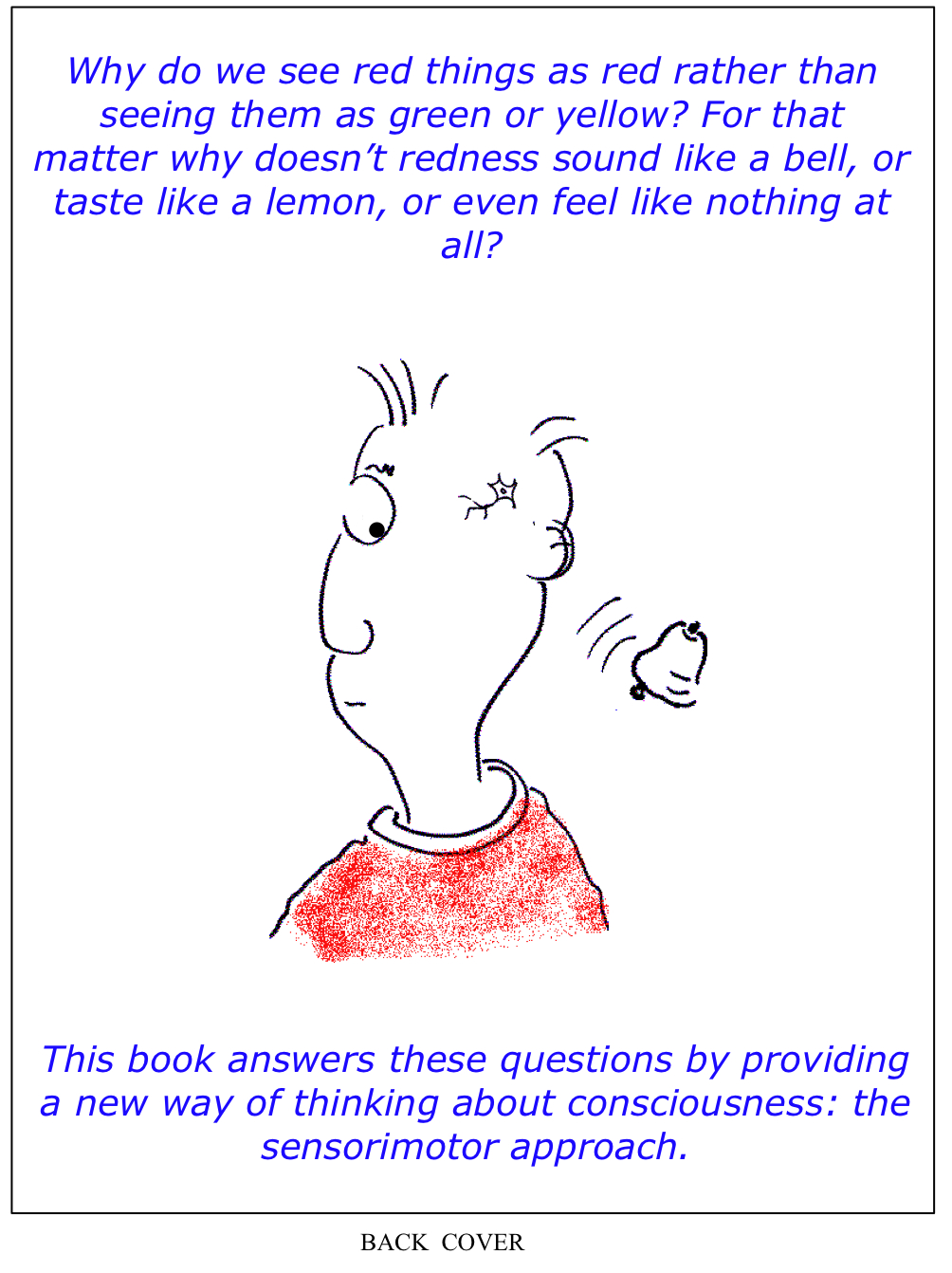
My book is coming out with Oxford University Press (NY) on April 27th, 2011!
CONTENTS
Preface
PART 1: THE FEEL OF SEEING
1. The catastrophe of the eye
2. A new view of seeing
3. Applying the new view of seeing
4. The illusion of seeing everything
5. Some contentious points
PART 2: THE FEEL OF CONSCIOUSNESS
6. Towards consciousness
7. Types of consciousness
8. Phenomenal consciousness, raw feel, and why they're hard
9. Squeeze a sponge, drive a Porsche: a sensorimotor account of feel
10. Consciously experiencing a feel
11. The sensorimotor approach to color
12. Sensory substitution
13. The localization of touch
14. The phenomenality plot
15. Consciousness
Preface
PART 1: THE FEEL OF SEEING
1. The catastrophe of the eye
2. A new view of seeing
3. Applying the new view of seeing
4. The illusion of seeing everything
5. Some contentious points
PART 2: THE FEEL OF CONSCIOUSNESS
6. Towards consciousness
7. Types of consciousness
8. Phenomenal consciousness, raw feel, and why they're hard
9. Squeeze a sponge, drive a Porsche: a sensorimotor account of feel
10. Consciously experiencing a feel
11. The sensorimotor approach to color
12. Sensory substitution
13. The localization of touch
14. The phenomenality plot
15. Consciousness
